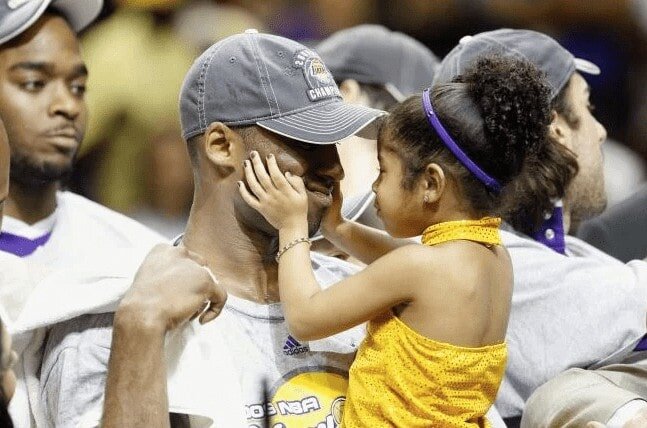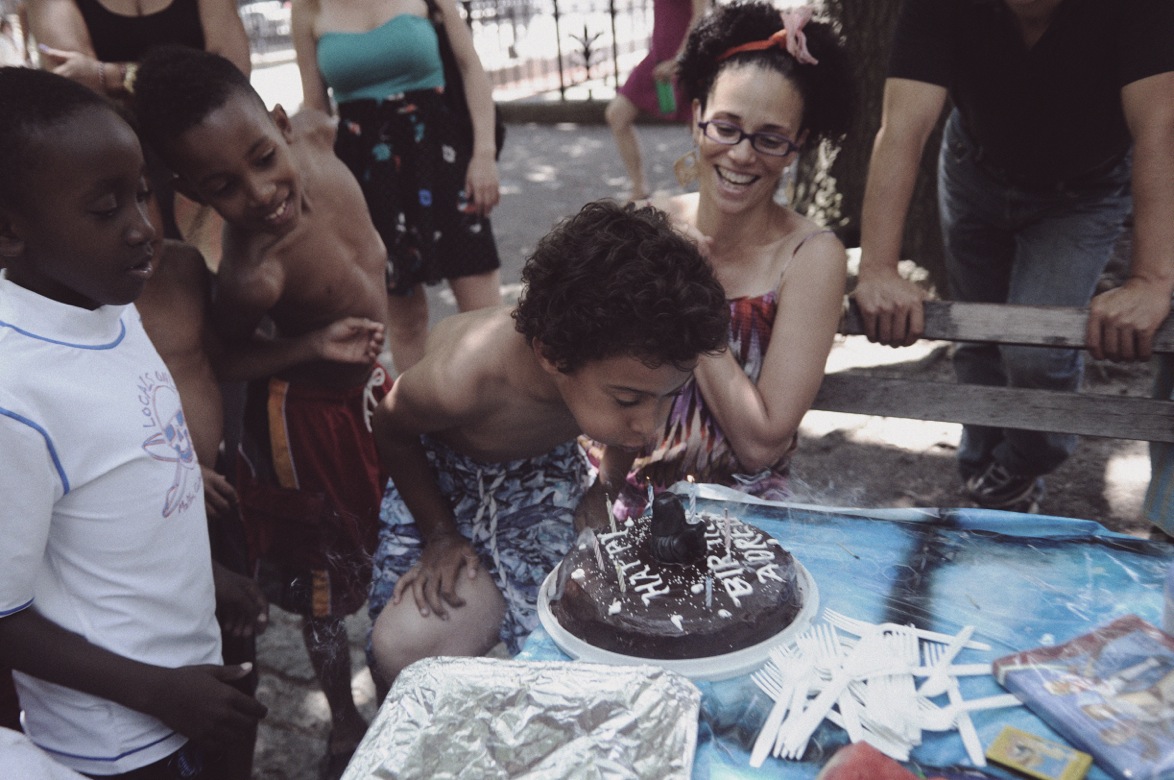Last week we met Lia McPherson, a dancer, musician, and the mother of Phoenix, her now 2-year-old daughter who lives with CHARGE Syndrome. (CHARGE is an acronym for a collection of health issues that affect various parts of the body.)
Lia’s pregnancy was a mix of excitement and fear. Her fears were stoked by at-times dismissive doctors who gave her upsetting information (ultrasounds detected a cleft lip and heart defects that required surgery) and encouraged her and her boyfriend Jeremy Bautista to get an abortion.
Once doctors seemingly exhausted all potential diagnoses while Phoenix was in utero, the focus soon shifted to getting her immediate medical attention after she was born via C-section on December, 29, 2016.
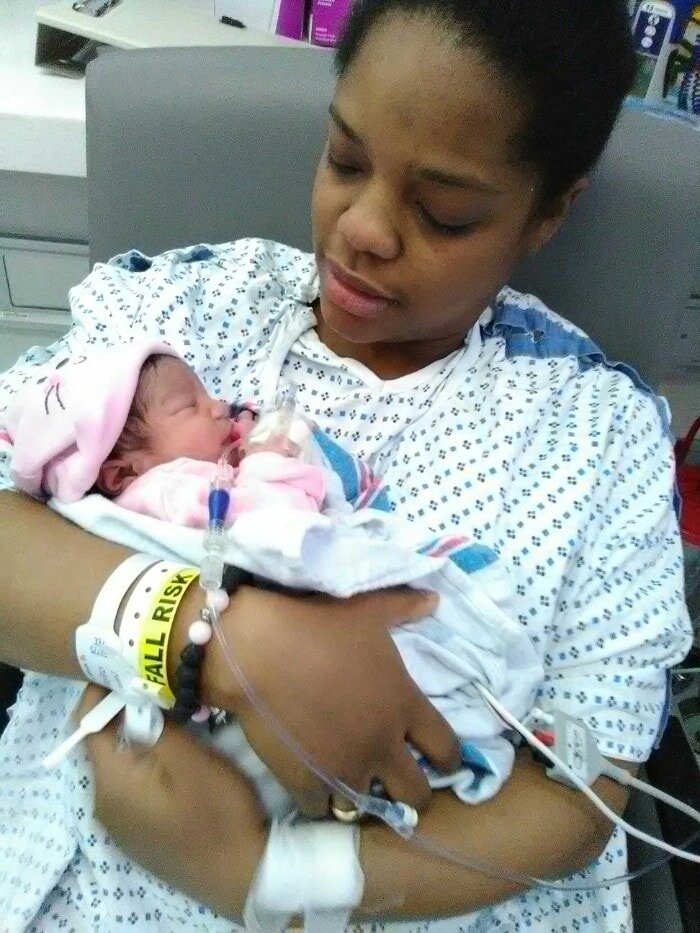
They spent eight days in the NICU and 22 days at New York University after Phoenix’s open-heart surgery before they were able to bring her home. But their story was just beginning.
When you have a kid, you examine every inch of their body all of the time. [Laughs] You know them from head to foot, like every centimeter. I just kept looking at her eyes, and one eye is smaller. And then I’m looking even more, and I’m like, one of her ears is more floppy and a little bit bigger. Hmmm.
I just started googling. They tell you not to Google, but I was googling, googling, gooling. Google didn’t really turn up much, thank God.
But then I go to Facebook on the two cleft lip and tetralogy groups I’m in. I start to look at the kids, and Phoenix doesn’t look like the cleft kids and she doesn’t look like a tet kid. These tet kids, they seem a little blue-y. It’s just a look, it’s hard to describe, but it’s a look that they have. They’re totally fine, but there’s a tinge of the skin that looks slightly different. And Phoenix’s skin looked amazing, so I’m like, this is a good thing.
But then she really didn’t look like the cleft kids. If you see cleft kids, they have these big, huge, gorgeous eyes. It’s almost cartoonish how big their eyes are. And her eyes are small.
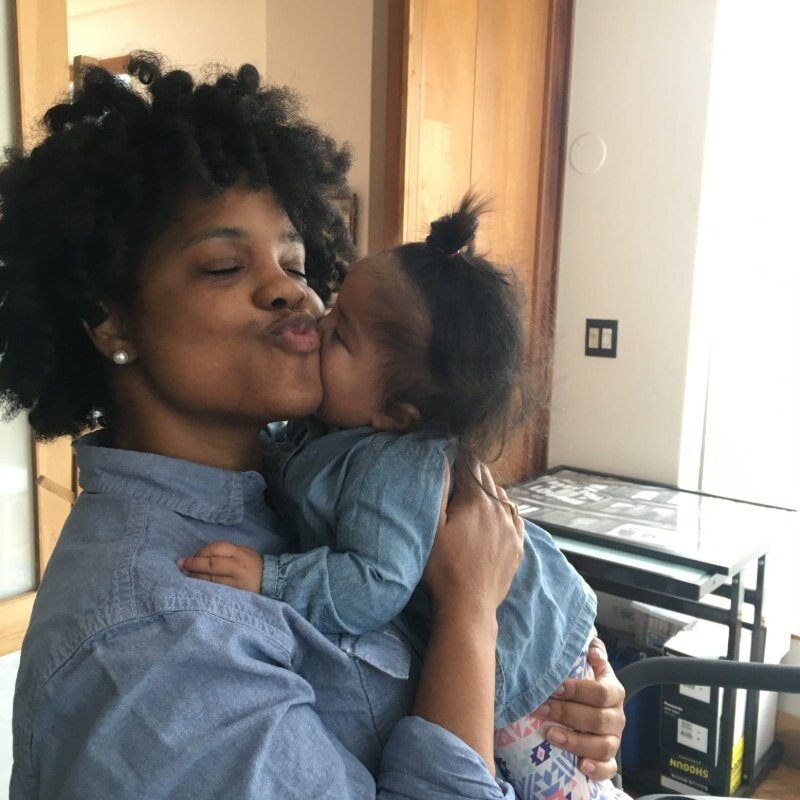
From the day she was born, Phoenix was just a beautiful kid. And I’m not just saying that because she’s my kid—well, partially, yeah. She’s gorgeous, but she doesn’t look like these other kids.
As I’m searching through these groups, I start to type in, “small eye” and all these other things that were indicators that she wasn’t like these other kids. I’m still not finding much.
I knew for all this time, even when I was pregnant, that something was off.
A couple of days go by and I see this little girl in the cleft group who looks just like Phoenix. She has a smaller eye. They both had squarish heads, and they both tilted their heads slightly—a symptom of poor vision.
I start to look, sort of stalkingly, at this woman’s profile. She says she just got her genetic testing and her daughter has CHARGE syndrome and something called microphthalmia, which means small eyes. With that comes these vision issues. Often it’s nearsightedness or, to varying degrees, only having ambulatory sight, which means you only see shadows and lightness and darkness in the extreme case.
I start looking up microphthalmia, tetralogy of fallot, and cleft as symptoms together and then BOOM! CHARGE Syndrome pops up.
CHARGE-ing Ahead
I text one of my cousins who I had been in contact with a lot while I was pregnant. I said, “I think Phoenix has CHARGE.”
And she’s like, “No!” You know how it is when you’re in a Black family, and everybody’s like, “Oh, girl, no. Don’t let all this stuff seep into your thinking. No, that’s not it, it can’t be.”
She looked it up because she’s an engineer, so she’s very science-y. [Laughs] She said, “That’s impossible, because that happens in 1 in 10,000 births. What’s the chances of her having this syndrome?”
And I’m like, “Girl, no, I know it. She has it.”
I knew for all this time, even when I was pregnant, that something was off. I just had this feeling of relief though because I knew that there was this nagging feeling that needed to be answered.
It actually made me feel so much better, to be honest. But it was a crushing feeling because, like, damn, I thought the only thing she would be dealing with is this heart and lip issue. I thought, We get this all taken care of, and, boom, everything would be ok.
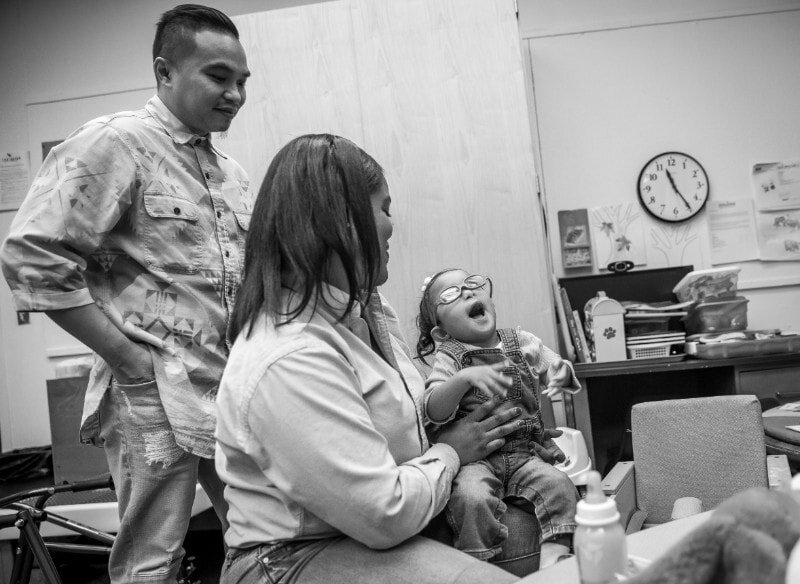
Finally at one of our pediatrician follow ups, I said, “Could you please take a look at her eyes?”
Up until that point we didn’t know about her eyes, but because of what I’d learned about microphthalmia, I really wanted her to check her eye. It was just so surprising to me as well that nobody had noticed her eyes up until then.
The pediatrician said, “Yeah, I kind of notice something going on, too.”
She waved the light and said, “Let’s get you to an ophthalmologist right away.”
Then I said, “I want her checked for CHARGE syndrome.”
Everyone was just shocked, like, Wow, how do you know this?
Sometimes I wonder, even now to this day because we’re still going through it, if people are questioning or doubting us because we’re people of color.
I’m black. My boyfriend is Filipino and he looks really young. We go into these doctor’s appointments and people look at us like we’re a two-headed monster. I don’t know if it’s because of that or because of Phoenix having special needs, and a lot of doctors not having experience with her particular syndrome, or what it is, but we often get met with “Mmm… maybe you don’t know what you’re talking about” or “Wow, how do you know that? How are you so smart?”
The pediatrician was like, “Oh, wow, ok. I’ll put you in touch with a geneticist as well.”
We go to meet with this ophthalmologist, and she… was… horrible. She was horrible!
Sometimes I wonder … if people are questioning or doubting us because we’re people of color.
She was pregnant, so I was thinking she was going to be this compassionate person.
She does the newborn ophthalmology testing. It is the pits because they put this thing in their eye that keeps it open, so Phoenix was screaming. The ophthalmologist did the testing and while she was testing her, she looked like she barely wanted to touch her.
When it’s done, she sits down and says, “Phoenix does have microphthalmia. But she also has bilateral colobomas of the retina and optic nerve.”
“Ok… What does this mean?”
“Well, she’ll never be able to read. She’ll never be able to drive a car. She’ll never…”
It was just like never, never, never… I can’t even count the nevers.
I just broke down. They left me there for a minute to get myself together.
I said, “How is that? She plays with her toys.”
She was tracking at that point. She was about four months, she was doing these things that, for her to be a kid going through as much as she’s going through, are amazing. She’s reaching for her toys, especially things that light up. She’s doing tummy time like she didn’t just have an open-heart surgery.
She said, “Well, I don’t know, but I encourage you to keep presenting things to her. Here’s some information.” And that was it.
It was just so cold. It just felt really cold.
I was like, ok, I’m not taking that as law. Phoenix can see more than what this woman is saying she can. Even though you look up colobomas and you look up microphthalmia, you basically see blind people. But once I realized that Phoenix had CHARGE, I started to look into all these people who have CHARGE who are doing amazing things.
Don’t get me wrong, there’s a huge spectrum. It’s similar to autism in that way. But what was amazing to me was that everybody had colobomas. The percentage is something like 90% of CHARGE children have colobomas. I was just looking at these kids who were doing sign language, and they’re reading, and they’re driving even, and I’m like, “Wow.”
And to be honest, the driving part, I was like, “First of all, she’s a New York City kid. Who freaking drives in New York City? And by the time she’s an adult, the cars will be driving themselves, so, please.”
Once I realized that Phoenix had CHARGE, I started to look into all these people who have CHARGE who are doing amazing things.
Suffice it to say those first six, seven months were just crazy.
It wasn’t just finding out that she had CHARGE syndrome. She had the heart surgery, then she had lip surgery, then during the lip surgery, they placed ear tubes and they gave her a G tube for feeding, which is a tube that is placed in the stomach.
It was just really rough.
I don’t know how to describe it, but pretty much up until her last heart surgery, which happened at 13 months, it was just like, “What the hell is going on?” We didn’t know what to feel, we didn’t know how to feel. Every surgery is hard, it never gets better.
When I try to explain it to people, I try not to be down and out or make people feel bad, because we don’t feel bad. We love her so much, and so much of us is her. She just brings us so much joy. But at the same time, it’s just really difficult.
We make it look easy because we have such a routine, and because we just roll with everything. Every time something comes our way, we just figure out a way to roll with it, you know? We were both performers. We were constantly out and about. Our lives were just the New York art scene, and so we’re always around people and people are used to us being out at events and performing or putting on projects. But I don’t think people know how to navigate or confront what we’re going through.
And we don’t want people to feel pity or bad, because Phoenix is a rock star. She is a super-crazy warrior. You see her and you’re like, “What? She has this going on?” You wouldn’t be able to tell at all. You can see that she’s different, but she’s just like this crazy, happy, on-the-move kid. But people don’t really know how to understand it.
It’s kind of been hard, especially with relationships with friends and family, because we try to maintain a balance of trying to be, kind of, the people we were, but also being there 24/7 for Phoenix because she has 14 therapy sessions a week. That’s occupational therapy, that’s physical therapy, that’s speech, feeding… and she goes to a school for the deaf for sign language. It’s around the clock.
‘A Window Of Time’
We kind of go through these ups and downs with these relationships that we’re trying to maintain.

People don’t understand, and like I said, we make it look so easy. People see that we’re still taking Phoenix out. At first we weren’t because she couldn’t because of her heart. She couldn’t just be in any place, and we couldn’t just have people over. Granted you can’t do that with a newborn anyway, but it was like, Don’t come here even if you look like you’re going to sneeze, you gotta get out of here because her heart is just too fragile.
That’s the other thing. With CHARGE syndrome, these kids have a window of time where they just might not make it.
The mortality rate for CHARGE kids is higher between birth and 4 years old. So after 4 years old, people are like, “Ok, we’re kinda in the clear.” But last year we had a lot of kids pass away in the CHARGE community, and it was kids over the age of 4. It messed everybody up. It’s like, wait a minute, hold on, this is not what was in the rule book.
[Editor’s note: According to CHARGESyndrome.org, “children with CHARGE have been shown to have a 70% survival rate to five years of age… The death rate is the highest in the first year of life.]
It just happened this past December. I finally found this other woman of color—this mom who’s Dominican—who’s daughter had CHARGE. She’s in Brooklyn and I was like, “Ohmigosh, so glad we connected! Your daughter looks so much like Phoenix.”
They both have a lot of similar CHARGE symptoms. But the thing about her daughter is she was born missing a thymus. If you don’t have that thymus, it’s just harder to fight infections.
Her daughter was constantly in and out of the hospital because she was getting these lung infections or pneumonia. Her daughter is a month older than Phoenix. We both had the same cardiologist, the same cardiac surgeon, just a lot of things in common.
Jeremy and I went to California to visit his family. It was our first trip together as a family, finally taking Phoenix to meet his grandparents and things like that. We’re now in this sweet spot with Phoenix where we feel way more comfortable to do things.
We’re out there and I message the mom, like “Hey, when we get back from California, there’s this sign language event happening. Let’s get together and finally have the kids meet.”
And, boom, four days later, her daughter passes away.
I could not believe it. These are the things that are happening on a weekly basis and it’s just tough. The thing with CHARGE moms, these groups are just so important. They’re just so important because everybody doesn’t understand. And you just need somebody to say, “I understand.”
It’s one thing for somebody who doesn’t understand to say it. You’re kind of like, “Whatever. You think you understand.”
But when somebody is going through the exact same thing you’re going through and they say they understand? That’s the kind of support you need. Because otherwise you’re a mess. You can’t function. And you have to function for your kid.
To learn how Lia gets the support she needs, read the rest of her story here.





